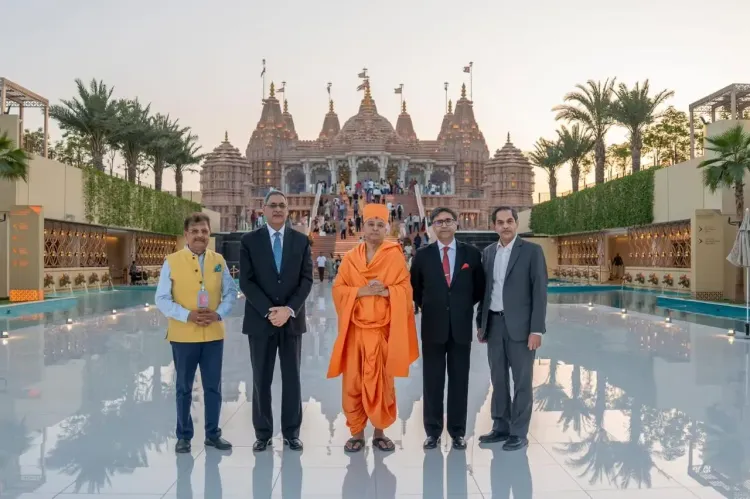Did Foreign Secretary Vikram Misri Feel Inspired at BAPS Hindu Mandir?

Synopsis
In a landmark visit, India's Foreign Secretary Vikram Misri found profound inspiration at the BAPS Hindu Mandir in Abu Dhabi. This temple stands as a beacon of interfaith harmony and symbolizes the strengthening ties between India and the UAE. Misri’s heartfelt reflections highlight the mandir's significance that transcends mere architecture.
Key Takeaways
- Vikram Misri's visit highlights the importance of cultural exchange.
- The mandir symbolizes unity in diversity.
- Architectural excellence is celebrated in the mandir's design.
- Spiritual experiences resonate deeply with visitors.
- Interfaith dialogue is crucial for global harmony.
Abu Dhabi, June 11 (NationPress) India’s Foreign Secretary Vikram Misri recently visited the BAPS Hindu Mandir, the first Hindu temple established in the United Arab Emirates (UAE), which opened its doors last year, symbolizing a new chapter in the relationship between the two nations.
During his official visit to the UAE on Tuesday, Vikram Misri was accompanied by Aseem Raja Mahajan, Joint Secretary for Gulf Affairs, Ambassador Sanjay Sudhir, and other senior delegates.
He expressed that the experience was overwhelming and remarked, “It’s a mandir that every Indian must visit.”
Welcomed warmly by Pujya Brahmavihari Swami, the Head of BAPS Hindu Mandir, he was treated to a traditional reception. He found himself captivated by 'The Fairy Tale', an immersive audio-visual display that highlights enduring values of harmony, mutual respect, and unity.
In reflection, the Foreign Secretary shared sentiments akin to those of India’s External Affairs Minister Dr. S. Jaishankar, stating, “The tale of the Mandir is indeed a fairy tale.”
As he roamed the tranquil temple grounds, he noticed the symbolic Tolerance Trees—a representation of the UAE’s commitment to unity amidst diversity—and appreciated the mandir’s architectural, spiritual, and artistic features. He was especially touched by the Harmony Dome, whose intricate design and deep symbolism were articulated by Pujya Brahmavihari Swami as a representation of the harmony between the Divine and Humanity.
Inside the sanctum, he offered sincere prayers at the seven inner shrines and honored Pramukh Swami Maharaj, whose spiritual vision was pivotal in bringing this iconic mandir to life.
Feeling deeply moved, he declared, “I have received countless blessings today. This is not merely a building; it is an embodiment of faith, beliefs, and transcendent ideas. The Mandir unites not only diverse faiths but all of humanity. It is miraculous... my heart and mind are overflowing. This is a mandir that deserves the highest honors and will be commemorated for generations. While some may view it as solely a religious space, it is far more significant—serving the world, humanity, and our universal existence. It is a mandir that every Indian ought to visit.”
He lauded the architectural ingenuity, engineering prowess, and the universal values represented by the mandir, referring to it as a “global symbol of interfaith harmony and cultural dialogue.”
Additionally, the Foreign Secretary offered special prayers for the ongoing prosperity and lasting friendship between the two nations.





